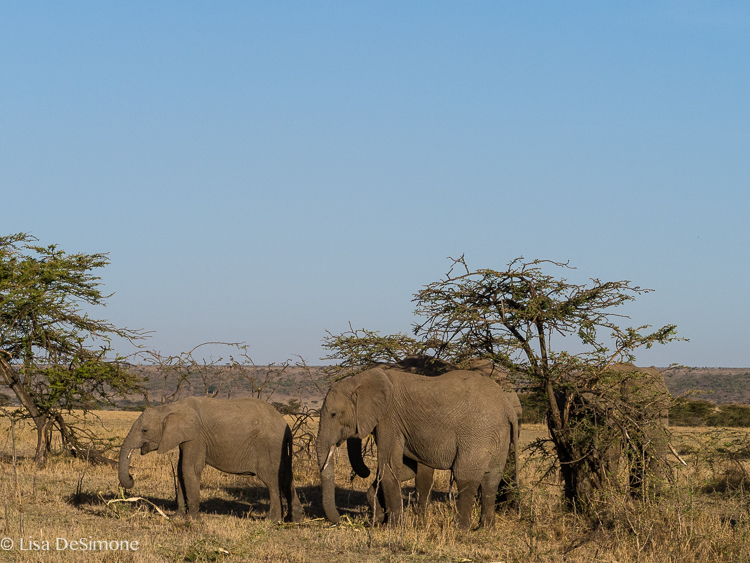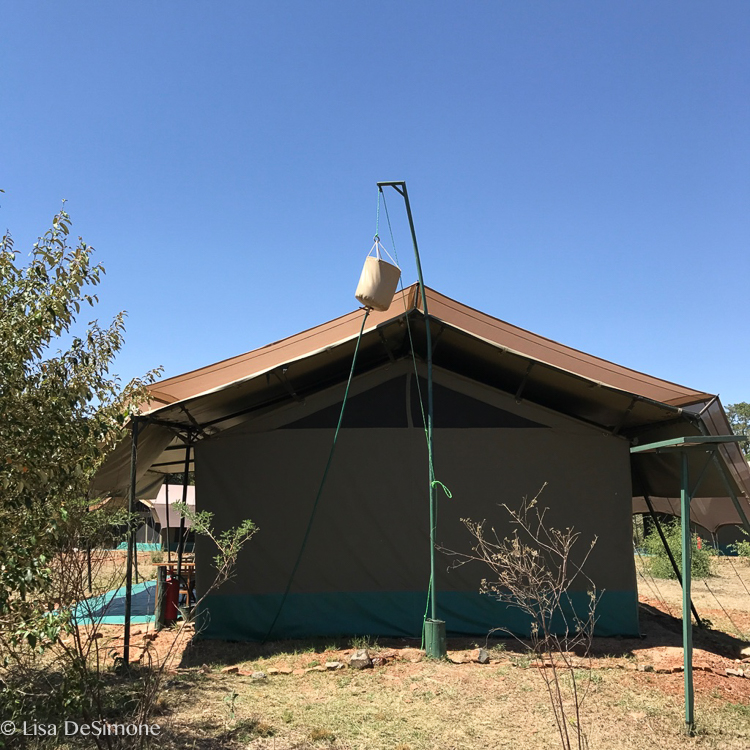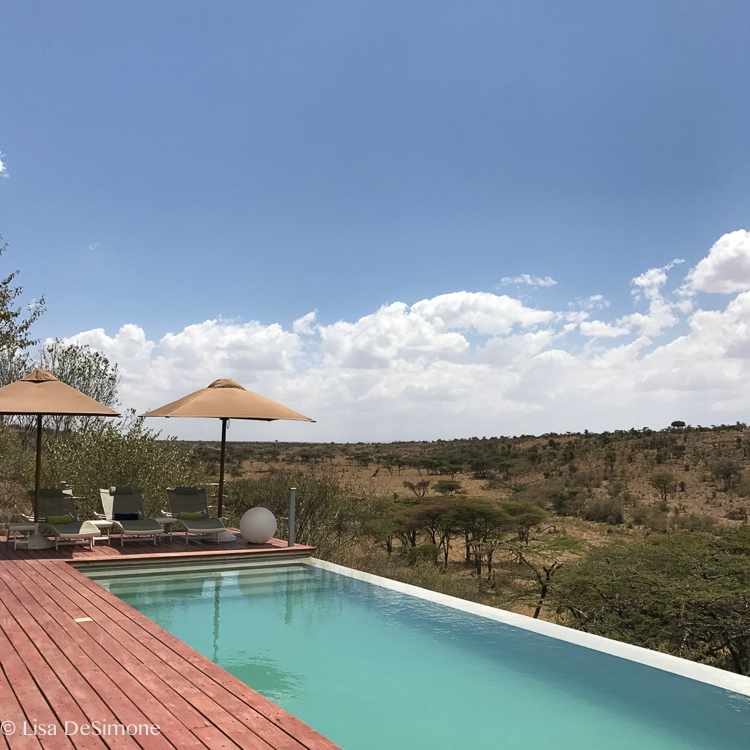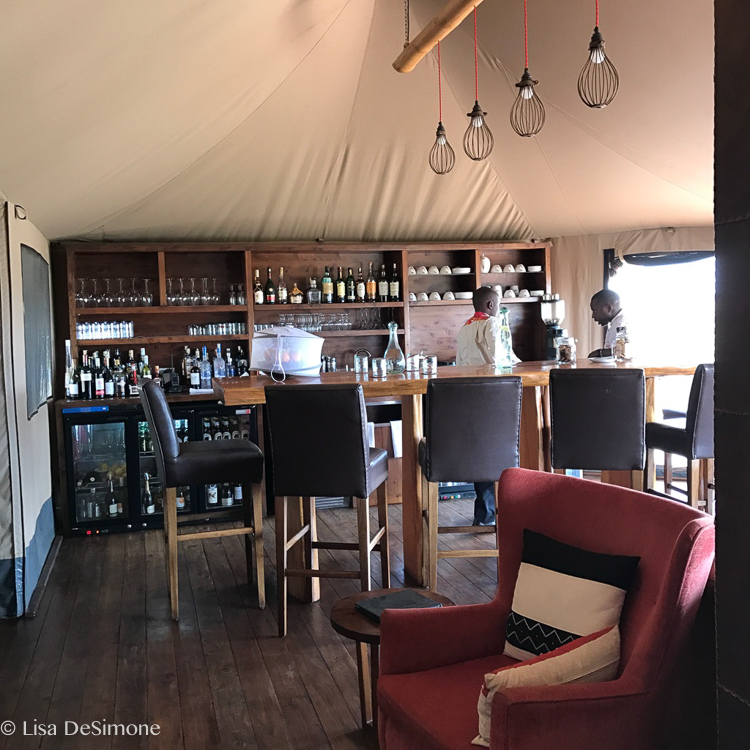ON SAFARI IN KENYA: finding peace in the stillness
/“Once you have traveled, the voyage never ends, but is played out over and over again in the quietest of chambers. The mind can never really break off from the journey”
Before I retired, I was moving non-stop. Whether it be working 12 hours a day at my job, answering emails at all hours of the night, working out, planning vacations, visiting with family and friends - I always seemed to be moving. The moments of stillness were few and far between, and when they did come, they left me uncomfortable and antsy.
In the past three years I feel like I’ve become a different, calmer version of myself. Maybe all my traveling has taught me to be grateful for what I have. Or maybe the reduction in my stress levels from no longer working has made me better appreciate that my life is pretty great. Whatever the reason, I find that not much rattles me any longer. Things that used to matter don’t seem as important. I’m more calm. More patient. More mindful.
silhouettes at sunrise, maasai mara kenya
When you travel as much as I do, unfortunate incidents are bound to happen. Case in point: losing my mobile phone last fall. When it happened, I had a very quick “oh shit” reaction (as I’m sure most people would), but then I immediately realized that it wasn’t really a big deal. In fact, i was super zen-like about it. Now granted, I was in a Buddhist monastery in Tibet when it happened, so I was surrounded by zen, but still I never once thought that it was something to get overly excited about. This surprised me, and the friend with whom I was traveling was extra surprised that I was so non-plussed.
Why was I so calm? I guess I quickly realized that in the scheme of bad things that could happen, this was way, way down the scale. Turns out, the most annoying parts of not having a mobile were not having an alarm to wake me up, and not having a way to upload images to Instagram!
While I was in Kenya last month, I discovered an even deeper level of patience and calm within myself. I could sit for hours - literally - waiting for Fig the leopard to move from her hiding place (that damn cat could nap for a very long time!!). I was never restless, fidgety or bored. I was mesmerized; enthralled; thrilled; curious; happy. I was PRESENT. It was magical.
fig, a leopard in the maasai mara, Kenya
Some three weeks after returning from Kenya, and I still find myself thinking back on that trip on a daily basis. I keep wondering why it’s been so hard for me to disconnect my thoughts from that adventure. Was it the the amazing wildlife, so beautiful and brutal at the same time? Was it the superb accommodations at which we stayed? Was it the people: the friendly Maasi, the new friendships I made, the drinks we shared, the late nights by the fire pit? Or was it the person that I was while I was in Kenya?
I was fully committed on that trip: rising early every morning to grab a morning coffee with my fellow photographers before heading out on game drives; napping in the heat of the afternoon like the wildlife; happily gazing upon heavenly sunsets every evening while drinking gin and tonics during our sundowners (and i don’t even like gin!!); floating in the infinity pool overlooking a savannah filled with giraffe and zebra; not wanting to leave the fire pit at night due to great conversations with new friends. I felt like I was walking around the whole time with my mouth open, gaping at the wonder of the environment in which I found myself. I didn’t let one sublime moment go by without being “in it”.
The other day, the instructor in my yoga class talked about finding peace in the stillness, and as I lay there in shavasana, it struck me: that is exactly what I had found in Africa. Peace in the quiet of the twilight game drives; peace in the night skies that were so dark it seemed like the stars were reaching all the way down to the earth; peace in the stillness of my mind.
(Read on for more specifics about my safari in Kenya, then click below to head over to see more images.)
THE SPECIFICS
Safari: I traveled with David duChemin (of Craft & Vision) on this photography focused safari trip to the Maasai Mara in Kenya. You don’t have to be a photographer to enjoy this particular adventure, but it was a pleasure to spend the days with like-minded people who enthusiastically chased giraffe silhouettes at sunrise, or who had no problem driving all the way to a watering hole in search of groups of zebras.
This same trip is going to be offered in 2018 and I strongly recommend it (see the link here). African safaris can be expensive, but considering all that is included and the level of accommodations, this trip is worth the price. You also get to spend time with David (a great humanitarian photographer) and his lovely wife Cynthia - what a bonus! All transportation from the time you land in Nairobi is included, plus 2 game drives per day, all food, drinks and alcohol in the camps, laundry at Mahali Mzuri camp, a bush flight back to Nairobi, etc etc.
This trip was NOT during the great migration, which has its pros and cons. This year has been the driest on record: in fact, the drought in Kenya has caused President Uhuru Kenyatta to declare a national disaster. Because of this, the grass was short, burned out, and brown. On the plus side it was easier to find and photograph the animals (particularly the lazy lions), because they were not hidden by the high grass. On the minus side, there wasn’t much contrast between the color of the lions and the color of the grass in my photos (although converting the images to black and white helps with that problem!). One significant advantage of not being in the Maara during high season is that there were only a few other vehicles in the Conservancy while we were there — fewer people is always a good thing.
Accommodations: We stayed at the EKA Hotel in Nairobi the night before we left for safari. It was very convenient to the airport. I would recommend arriving an additional day early to allow for any travel snafus, plus it provides an more time to get over the inevitable jet lag.
We stayed at two different safari camps while we were in the Maasai Mara: they were different but great in their own ways. Both were located in the private Olare Motorogi Conservancy in the wider Maasai Mara ecosystem.
Porini Lion Camp - the Maasai safari guides at this camp were top notch! We had open top and open sided jeeps, and only 4 people per vehicle, which allowed for lots of movement and ability to photograph easily. The “tents” themselves were very nice (bucket shower, anyone?), although my roommate and I were kept awake for a few hours each night by a large hippo eating the grass right outside our tent “door”!
Mahali Mzuri - This was one of the nicest places at which I have ever stayed. Owned by Sir Richard Branson, this camp is 5-star in every way. There are only 12 tents, and all sit high up on a plateau. From the infinity pool, you could watch the giraffe and zebra down below every day. As you can see by the photos below, it’s not fair to call the accommodations “tents” (they looked kind of like spaceships to me!). Each includes a claw foot tub with savannah views, hupe patios, and high-end amenities. The staff was so very sweet, the food excellent, and the spa treatments great. On safari, we had 4 people per vehicle here as well, but the tops on these vehicles did not come off, which could be a tad annoying at times when you needed to get the right vantage point for a photograph. The guides/drivers were fine, but I didn’t find them to be quite as good as the ones at Porini. Regardless, I had an amazing time and it was very difficult to say goodbye at the end of the trip.
Worth the splurge: I am so glad I decided to do a hot air balloon ride one morning. I’ve done a few of these around the world, and it is pure magic to be floating across an amazing landscape such as the Maara, soundless except when the flames are fired to fill the balloon. Watching the sunrise from such a unique vantage point can be breathtaking. From up high, the effects of the intense drought gripping Kenya were painfully obvious.
Several of us chose to spend a few hours one day at a local Maasai village. We were entertained by the men doing the “jumping dance”, which is done for tourists when they visit, but actually is a significant ceremonial dance to mark the coming of age of young Maasai warriors. The jumping dance is also know as Adumu or Aigus, which means "to jump" in their native language. This dance is how a Maasai warrior finds a mate, and the highest jumper gets the girl. Being able to jump high is also a show of strength and manhood.









































